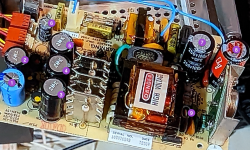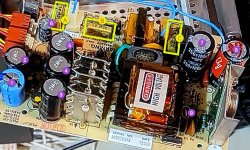I have been dealing with faulty Rifa X2 capacitors my whole life. They are a dual edged sword.
The plastic casings they have are brittle and they crack. Small amounts of moisture get in. Don't forget they are metalized paper types.
The paper absorbs moisture and it expands. As the volume increases it further cracks the plastic shell. Then one day, you switch the unit on and it evolves huge quantities of smoke (but not fire).
The capacitors can in fact short out and self destruct.
One of the more interesting failures I had was a Rifa capacitor that was placed across the motor control pedal of a vintage Singer sewing machine. At about 2 or 3 AM (when I was sleeping in a bedroom with said sewing machine) the capacitor across the pedal shorted out, presumably after a line borne voltage transient. The machine's motor started at full speed, waking me me up in a dazed state wondering what the Hell was happening. I rushed over to the machine and unplugged the machine. The next day I found the shorted capacitor in the pedal assembly.
The reality is, if you want this problem to "go away" forever, simply leave those Rifa caps out. Don't worry about RFI being put onto the line, there are now a million and one wall wart SMPS power supplies that put more RFI onto the line than your vintage computer ever could.
But, on the other hand, they can improve your computer's resistance to RFI on the line.
So these days what I do is simply replace them for new Rifa caps, readily available from Mouser, Newark, Digikey etc. They will be ok for about 25 to 30 years, before they smoke you out of your workshop and history repeats itself.
I wouldn't replace them with orange drop types as they might create fire. One option though, if there is space, is to go for 1500v to 2kV rate poly caps. This way they won't fail, but they don't have the fire ratings, but at that voltage rating it is probably academic.
Back in the 1930's, before X2 line rated safety capacitors were invented, with UL (undertakers Laboratories) certifications,, the capacitors used as line RF filters were in fact just wax paper caps. But the thing was, the designers used ones rated over 1kV, so they never had any problems. As time went by people wanted more compact caps for the applications, for pcb use, with thinner insulation between the foils and hence more likely failure, so they had to then go for flame retardant materials and we ended up with the typical Rifa "safety capacitor" we have today.


